They can be found in remote controls, radios, game controllers and watches: devices with AA batteries are everywhere. It is just as common to find leaking batteries or devices that do not work properly with rechargeable batteries. One solution to these problems is special Li-ion rechargeable batteries with an integrated voltage regulator. The latest generation from XTAR not only delivers a high capacity, but also offers useful functions.
You can find the German version of this review on my website: SammysHP Blog › XTAR 1.5V AA CLR 4300
The batteries were provided by the manufacturer for this review. Thank you very much!
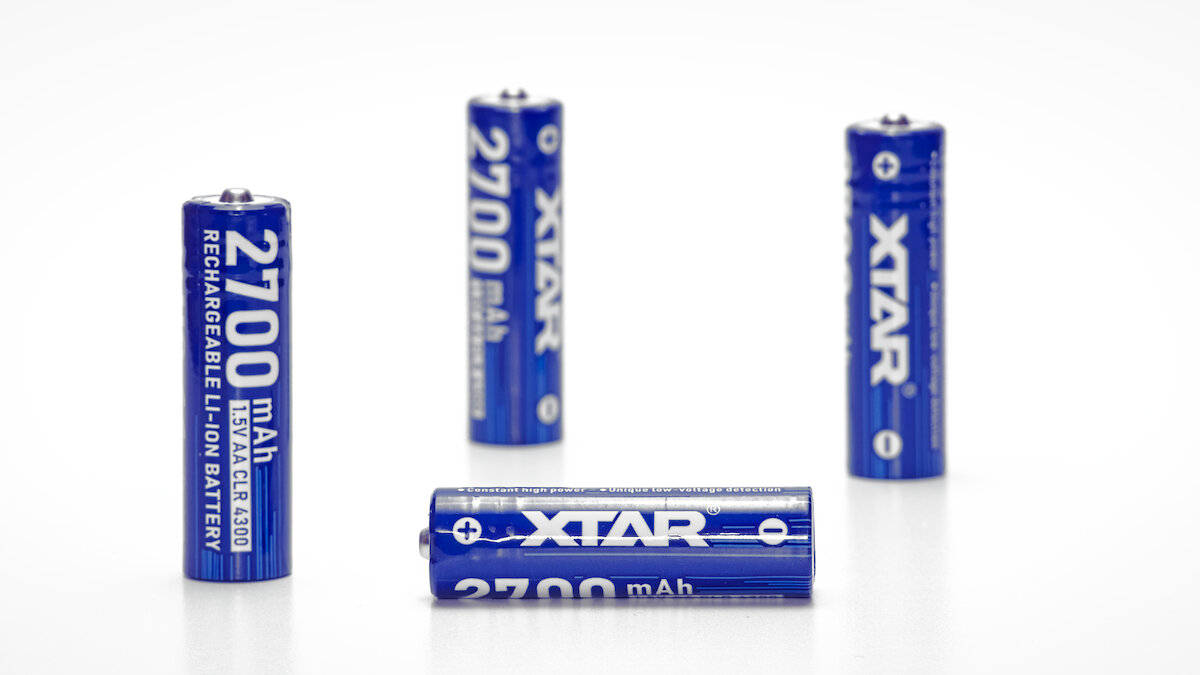
Different types of AA batteries
There are various battery types in the AA/Mignon size, which differ from each other in several details.
The classic: the alkaline battery (alkaline manganese, also known as “alkaleak”). A new battery has a voltage of around 1.5 V, but it drops continuously when discharged. It tends to leak, often damaging devices. It is also not suitable for high current output. On the other hand, it is particularly inexpensive and is therefore comes often bundled with new devices.
NiMH batteries, especially of the LSD type (Low Self Discharge), have advantages in almost all respects. As they can be recharged hundreds of times, they are more environmentally friendly and significantly cheaper than batteries in the long term. They do not leak and can deliver comparatively high currents. Their voltage drops quickly to around 1.2 V, but is then maintained for a long time. They are normally the preferred type.
In some cases, lithium primary batteries are advantageous. They are very lightweight, have a high capacity, can be stored for a long time and still work at very low temperatures. Their voltage is slightly higher at around 1.7 V, but most devices can cope with this. The disadvantage is their high price. They are well suited for devices with low power consumption or at low temperatures, such as wireless outdoor thermometers.
Similar in name, but completely different: Lithium-ion (Li-ion) rechargeable batteries, which are available in the same size as AA batteries (then called “14500”). When fully charged, they have a voltage of 4.2 V and can therefore not be used as a replacement for the other types listed here!
A special case is the battery type shown in this article, the Li-ion battery with 1.5 V regulator. This is a Li-ion battery that is equipped with a tiny, integrated voltage converter. This generates a constant 1.5 V from the 2.7 – 4.2 V of the Li-ion battery. This type always makes sense when devices have problems with the low voltage of NiMH batteries or partially discharged alkaline batteries. The disadvantage is the higher price.
XTAR 1.5V AA CLR 4300
I received the batteries as a set of four together with a container for storage. A small product flyer was also included.

Detailed specifications can be found on the manufacturer’s website. They are the size of a normal AA battery (50 mm long and 14 mm in diameter) and – at just 20 g – weigh almost a third less than NiMH rechargeable batteries.
Nominal capacity: | 2700 mAh
Nominal energy: | 4300 mWh
Nominal voltage: | 1.5 V
Discharge current: | 2.5 A
Charging voltage: | 4.75 – 5.5 V
Charging current: | 0.45 A
Operation temperature: | -20 – 60 °C
Storage temperature: | -20 – 50 °C
Cycles: | > 1200
Length: | 50.3 mm
Diameter: | 14.3 mm
Weight: | 19.8 g
Their energy is specified as 4300 mWh, which in this case refers to the energy of the internal Li-ion battery. The voltage converter introduces losses, which means that a little less is available at the end. 2700 mAh, on the other hand, indicates the actually available capacity. In comparison, LSD NiMH batteries only have around 2000 mAh, and at a lower voltage.

Discharging
In the past, batteries with an integrated 1.5 V regulator simply switched off as soon as they were empty. This meant that the battery warning in devices had no chance to fulfill its function. In the next generation, the voltage dropped abruptly to 1.1 V towards the end of the discharge. However, some devices no longer function correctly at this low voltage.
This behavior was improved again in the third generation: The voltage now drops continuously until it reaches around 1.05 V at the end, instead of dropping abruptly.
The batteries were discharged with an electronic load with a current from 250 to 2000 mA. The process was recorded using a four-wire measurement.
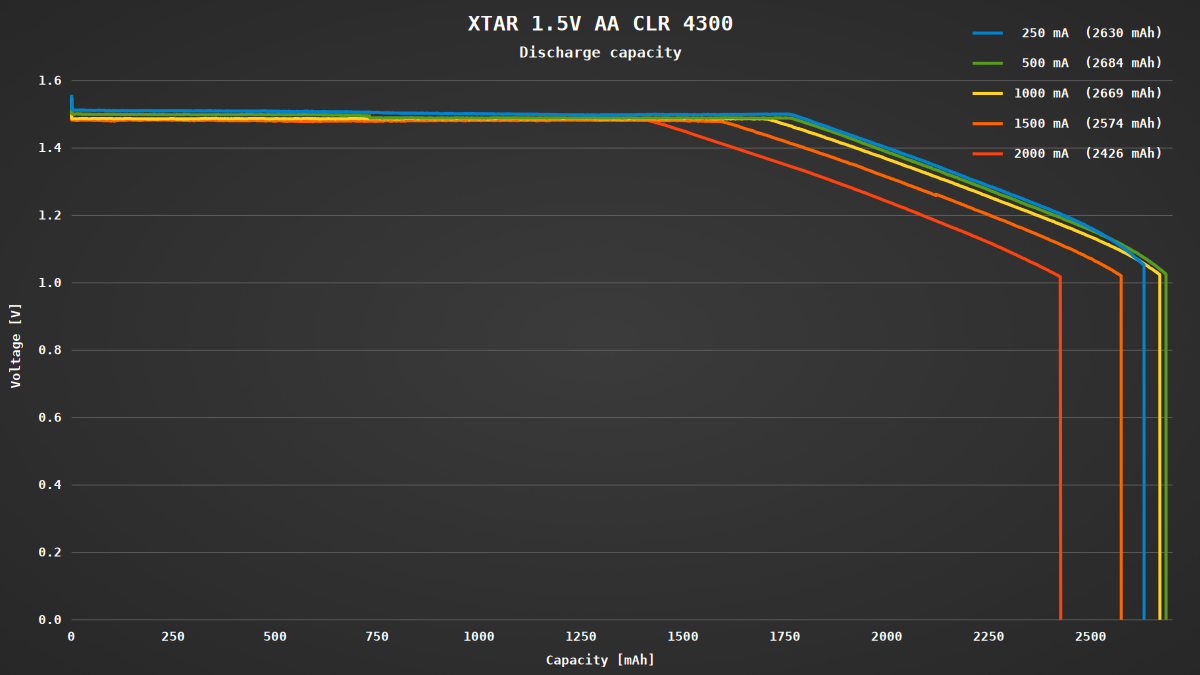
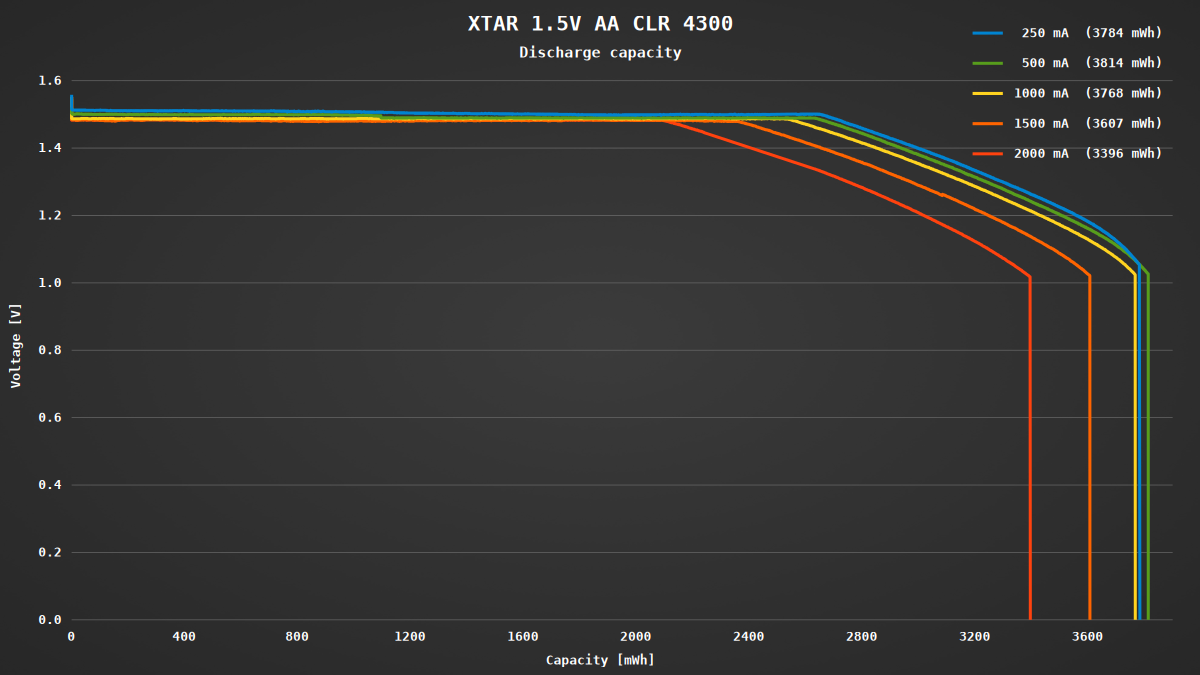
According to the specification, the new XTAR batteries should be able to deliver up to 2700 mAh. Although this value was not quite achieved in my tests, the result was very close.
The last measurement at 250 mA performed surprisingly poorly. Another tester also had similar experiences, that some samples show first signs of fatigue after a short time. However, a further measurement after a two-week break produced a slightly better result than even in the first run.

The batteries are suitable for a continuous discharge current of up to 2.5 A according to the data sheet. A temperature of over 40 °C was reached at the positive terminal, where the voltage regulator is located, during a discharge with 2 A.
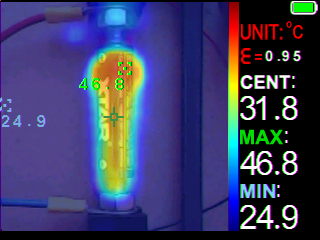
IR image with Zoyi ZT-R01
In the load test, the batteries were even able to deliver up to 3.6 A (at least for a short time). At 3.9 A, however, it was finally over and the voltage could no longer be maintained.
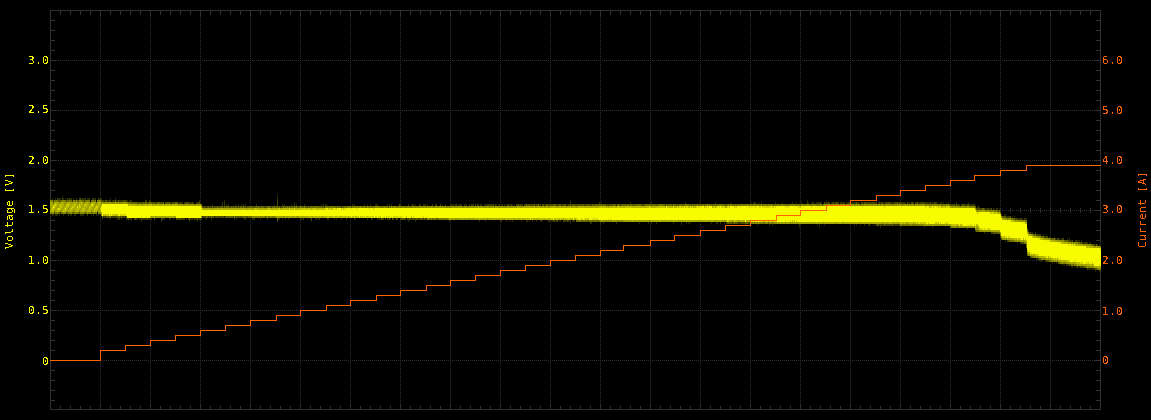
Compared to previous versions, the voltage has significantly less noise. Sensitive devices (such as those with radio receivers) may therefore be less disturbed than with the old models.
Charging
A special charger such as the XTAR VX4 or the simpler XTAR MX4 is required for batteries of this type. However, the charge controller itself is integrated into the batteries, which means that the “charger” is little more than a battery holder that provides 5 V to the charging terminals.
The charging current is around 450 mA, meaning that the charging process is completed after just under three hours. During the charging process, a green LED flashes at the positive terminal of the battery, after completion it lights up continuously.
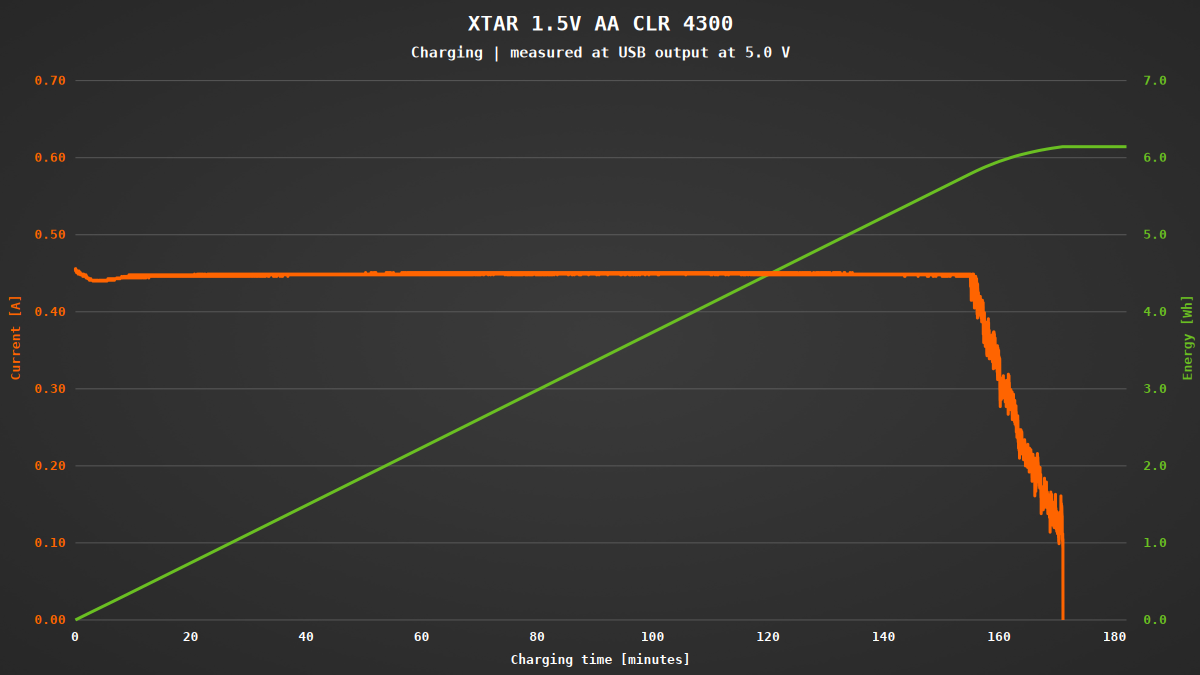
Conclusion
Even if NiMH rechargeable batteries are almost always the better choice – in some situations you need an alternative. The new “XTAR 1.5V AA CLR 4300” rechargeable batteries deliver a constant voltage of 1.5 V for the majority of the runtime, thanks to the integrated voltage regulator. A smooth and continuous drop in voltage to 1.05 V towards the end of the runtime serves as a warning of an empty battery. I also like the manufacturer’s honest capacity specification. At 3800 mWh, the available energy is significantly higher than that of NiMH batteries with around 2400 mWh. The voltage has much less noise than previous models.
However, it seems that one of the batteries in my tests may have already shown first signs of fatigue, but the results were inconclusive. Further observation is required here.